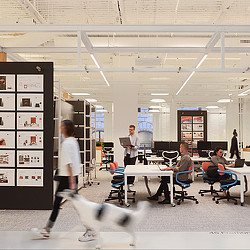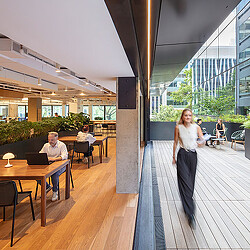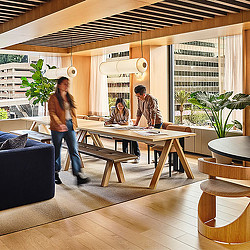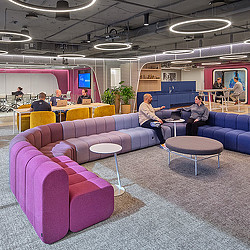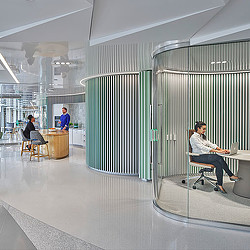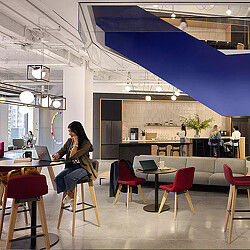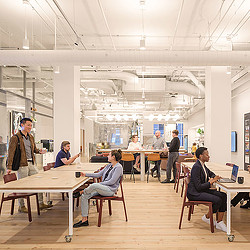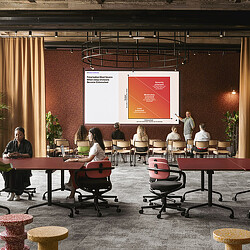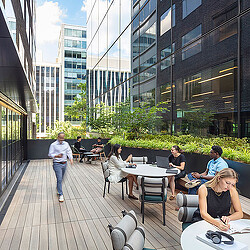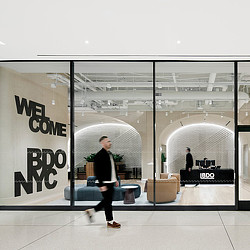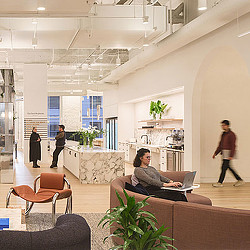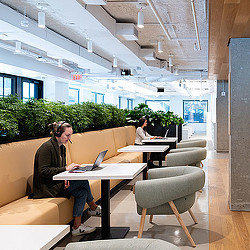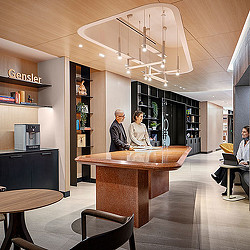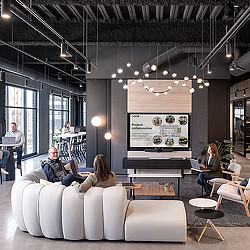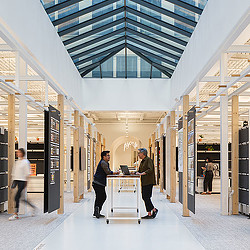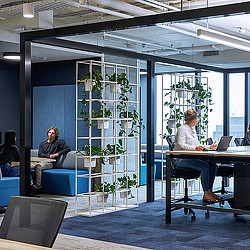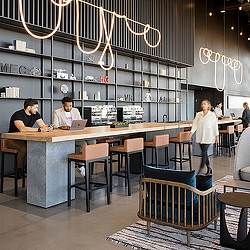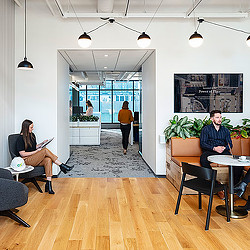The Key to a Better Workplace? Understanding How and Where People Work Today
Our global workplace research uncovers insights into new work patterns to help design better workplaces for the future.
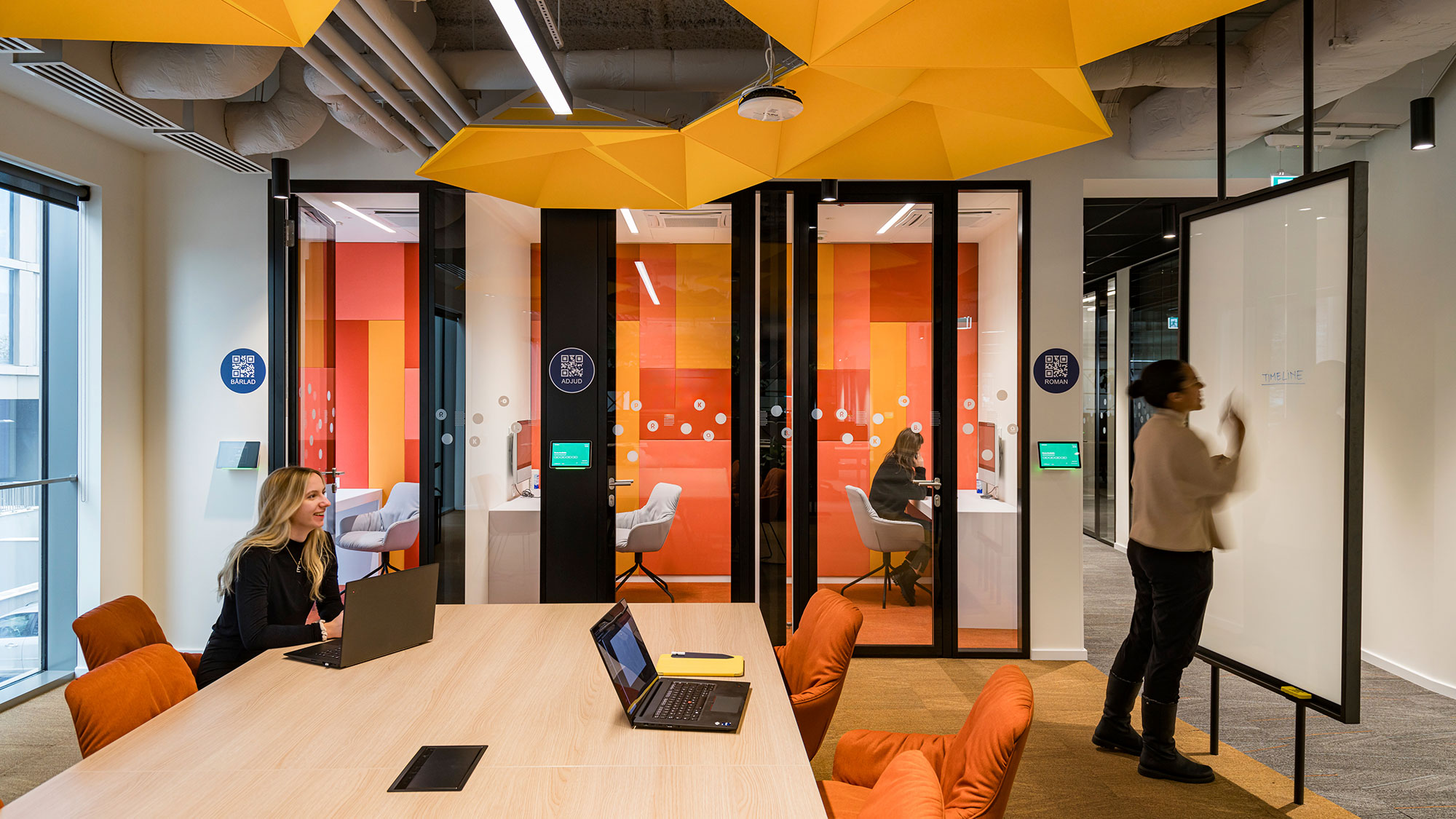
Gensler has been measuring how and where people work for almost two decades. Over this time, we’ve seen work evolve and employee expectations evolve — impacting not only how we work but also where we work today. As we continue to measure these key metrics over time and by country, industry, role and age, we gain a deeper understanding and uncover insights into new work patterns to design better workplaces for the future.
How and where employees work varies across country, industry, age, and role.
How People Work Today
Gensler measures how office workers work across five work modes: working alone, working with others in-person, working with others virtually, learning (including professional development and coaching), and socializing (including connecting and networking). We measure time spent for each work mode as a percentage of time during a typical work week.
Over the last two decades, we’ve seen time spent working alone slowly decrease, while since the pandemic, we’ve seen time spent learning and socializing increase. Although time spent working with others virtually spiked during the pandemic, it has surprisingly returned to pre-pandemic levels. For the first time, we see time spent working alone is the same (40%) as working with others (total of in-person and virtual) with socializing and learning remaining fairly high since the pandemic.
These findings have implications for a variety of spaces in the workplace. Three-quarters of working alone time, or 30% of a typical work week, requires high concentration, which drives a need for quiet and distraction-free spaces in the office. Spaces for hybrid meetings are also needed, with six out of 10 meetings hosted in the office having both in-person and virtual participants.
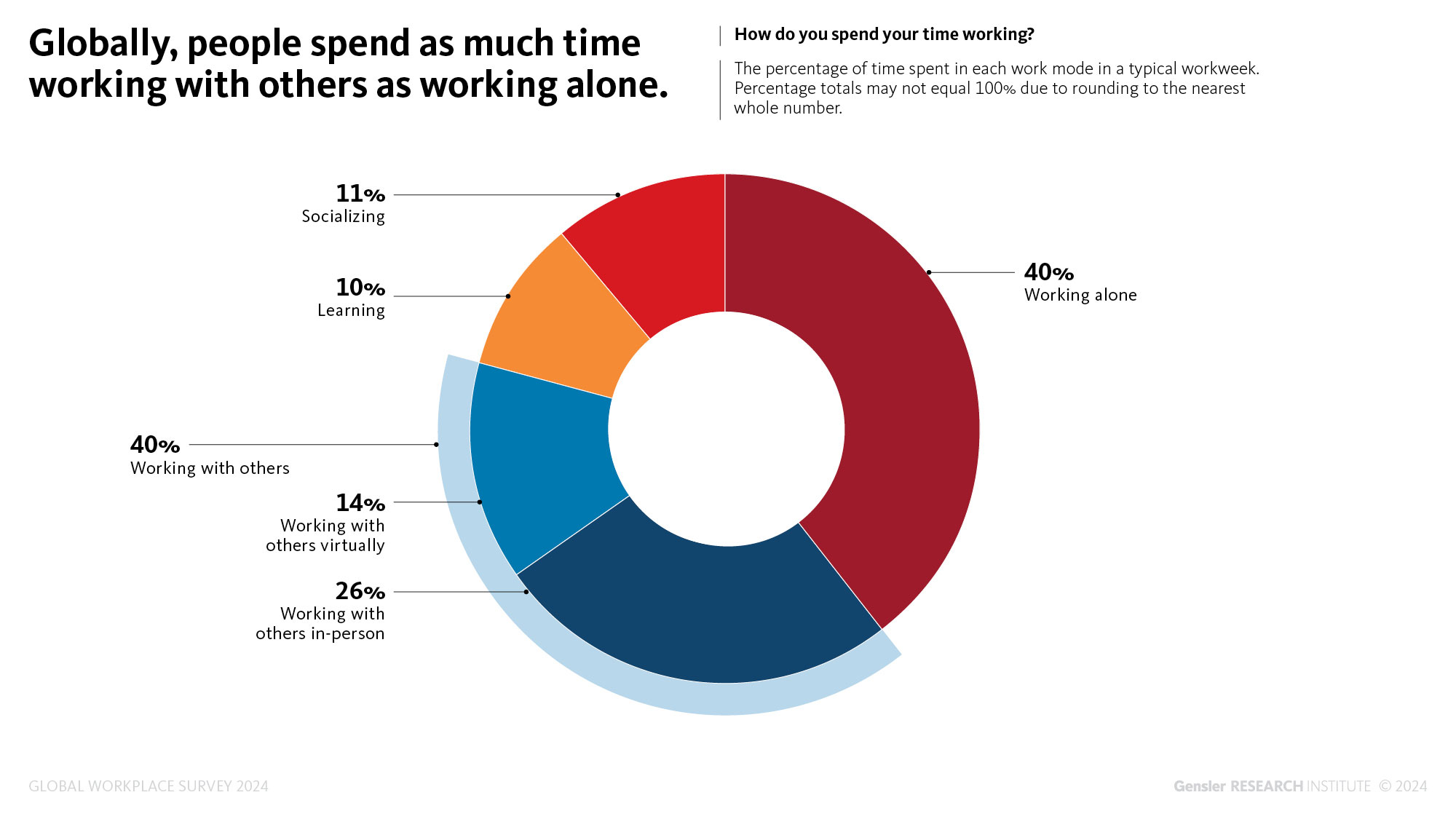
Every industry works differently so time spent varies substantially as well. Government/Defense, Legal, and Media workers spend more time working alone, while Consumer Goods, Government/Defense, and Energy workers spend more time working with others in-person, and Technology workers spend more time working with others virtually than other industries.
How people work also varies by country. While working with others in-person is surprisingly consistent, Japan and France spend more time working alone, Costa Rica and India spend more time working with others virtually, and India spends more time learning and socializing than other countries. How people work is fairly consistent by age but there are differences by role. You can explore differences in how people work by industry, country, role, and age on our website.
Where People Work Today
Since 2016, we have seen that office workers are mobile — working both in and outside of the office. While the pandemic accelerated the prevalence of working from home, office workers have always worked in other locations such as client/customer sites, business travel, coworking sites, and third places (defined in the survey as coffee shops, libraries, parks, etc.). In our research, respondents report that they currently spend half of a typical work week (51%) working at the office, 20% working from home, and 27% at all these other locations.
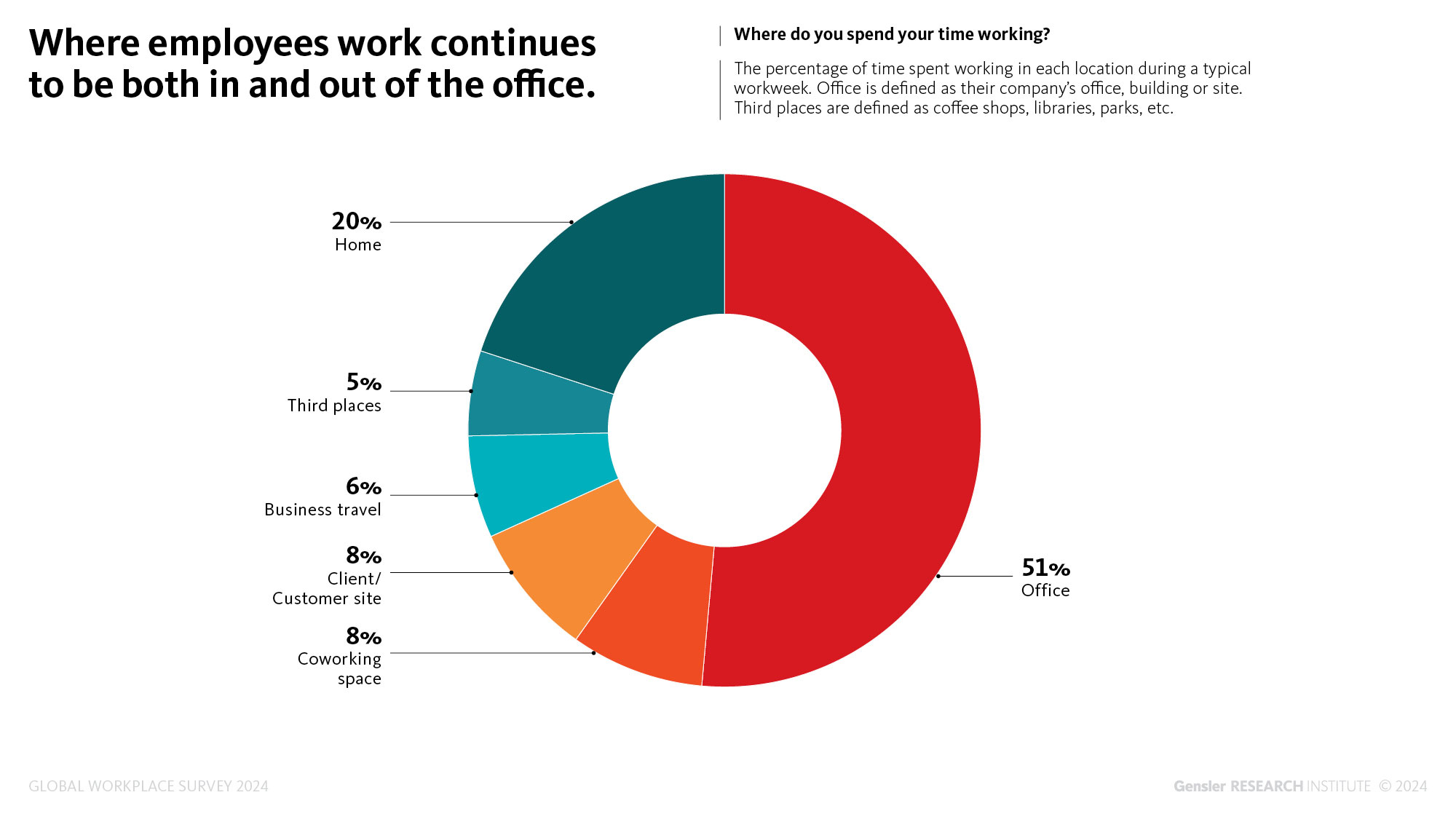
Just like how people work, where people work also varies by industry. Government/Defense workers not only spend more time in the office, but they also spend more time working from home than other industries. Not-for-Profit, Sciences, Management Advisory, and Energy workers spend over 30% of a typical week working from other locations, which is higher than their counterparts.
Workers in France, Japan, and Mexico spend the most time at the office, while workers in the U.K. spend the most time working from home. Workers in Saudia Arabia and India spend at least 40% of a typical week working in other locations, which is the highest of all countries surveyed. While time spent working from home does not vary considerably, senior leaders are the most mobile, spending less time at the office and more time working in other locations. We invite you to explore differences in where people work by country, industry, role, and age on our website.
So, is there an increased need to work in the office? Absolutely! We asked the same question in this research as we had in the last two surveys: “What percentage of time do you ideally need to be working in the office to maximize your individual productivity and your team’s productivity?” In our latest survey, we saw an even larger gap between the current time spent in the office and what people say they need for their productivity than in previous surveys. France, Japan, and Mexico were closer to their ideal, but India, Saudi Arabia, Costa Rica, and China had the biggest gaps, signaling the greatest opportunities to create workplaces that people need.
In our next blog in this series, we share the three major findings and insights from Gensler’s Global Workplace Survey 2024, including what makes a high-performing workplace and what factors matter most to design an exceptional workplace.
Download Gensler’s Global Workplace Survey 2024 to learn how to convert our knowledge of how employees work into design outcomes that can elevate workplace performance from good to great.
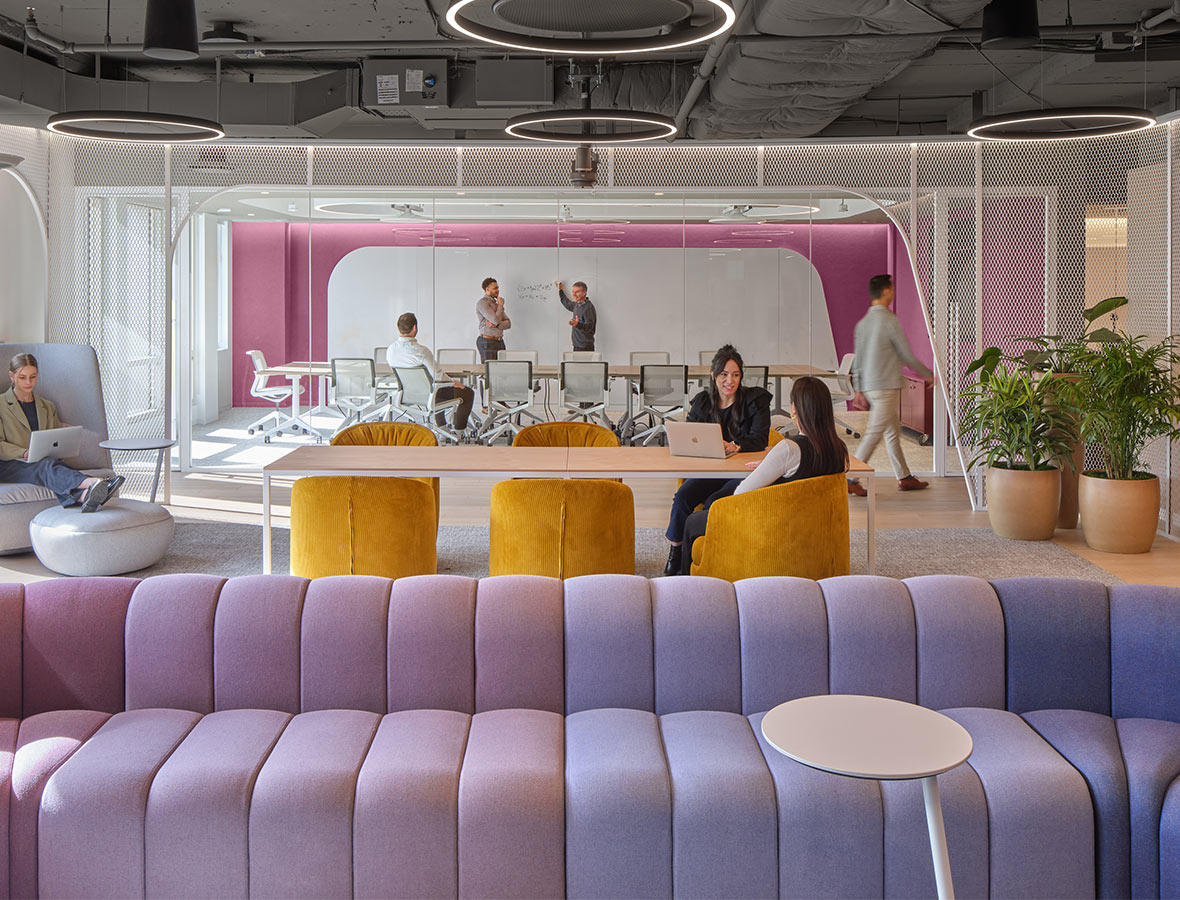
For media inquiries, email .


